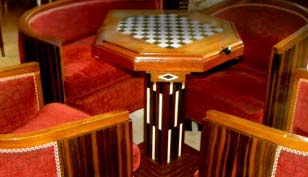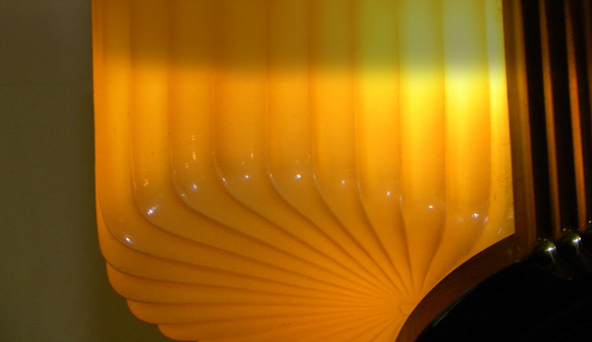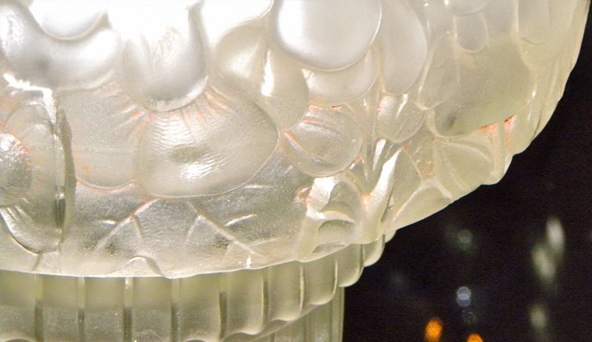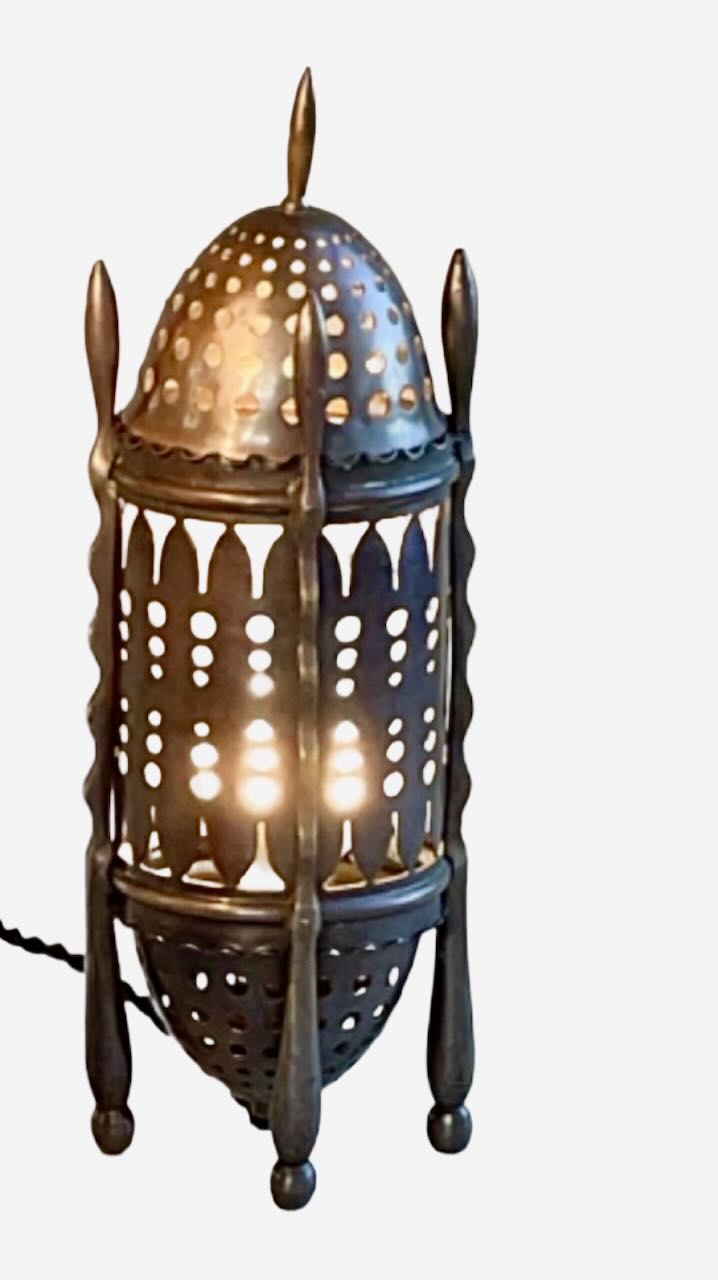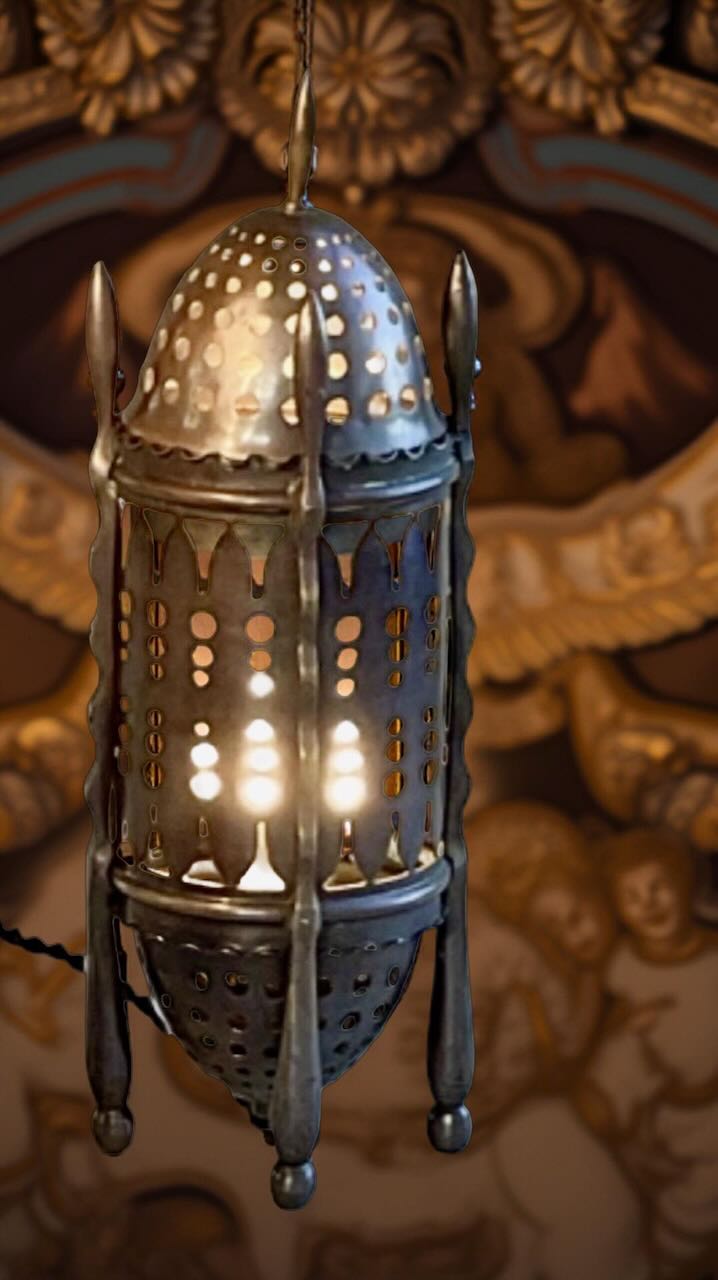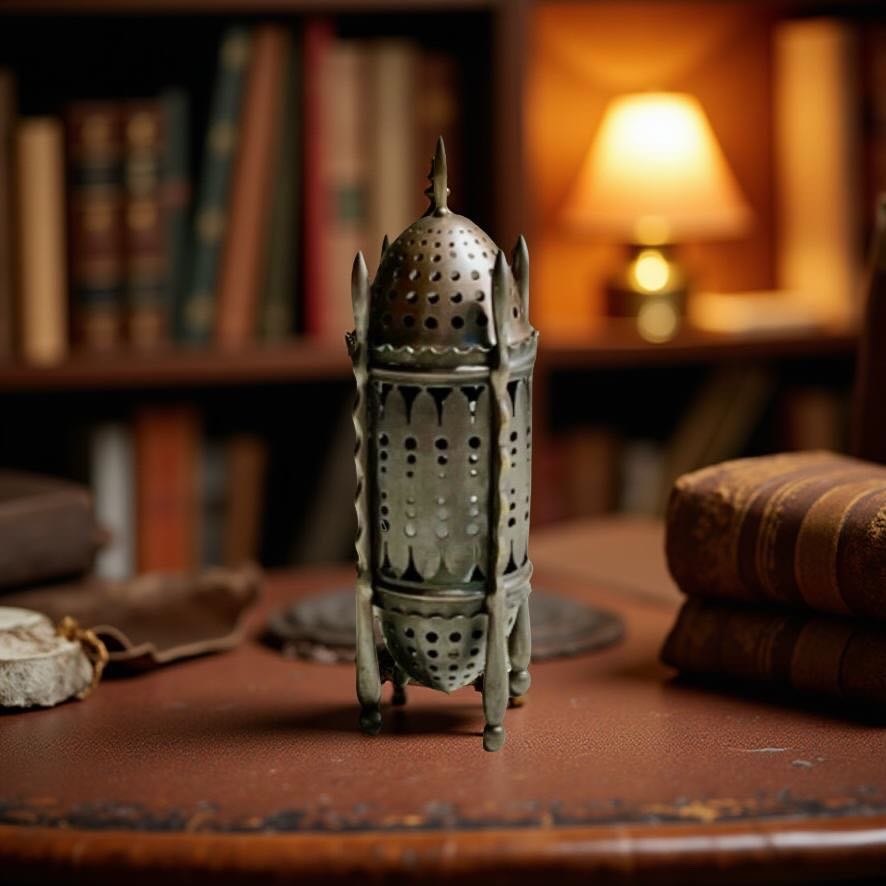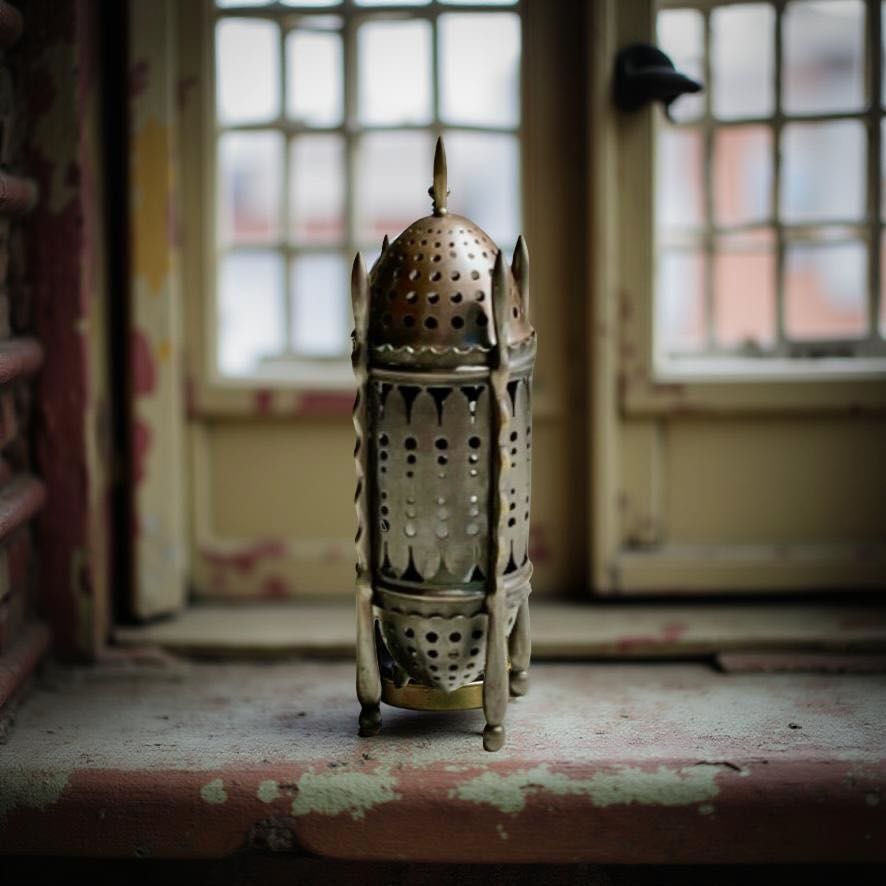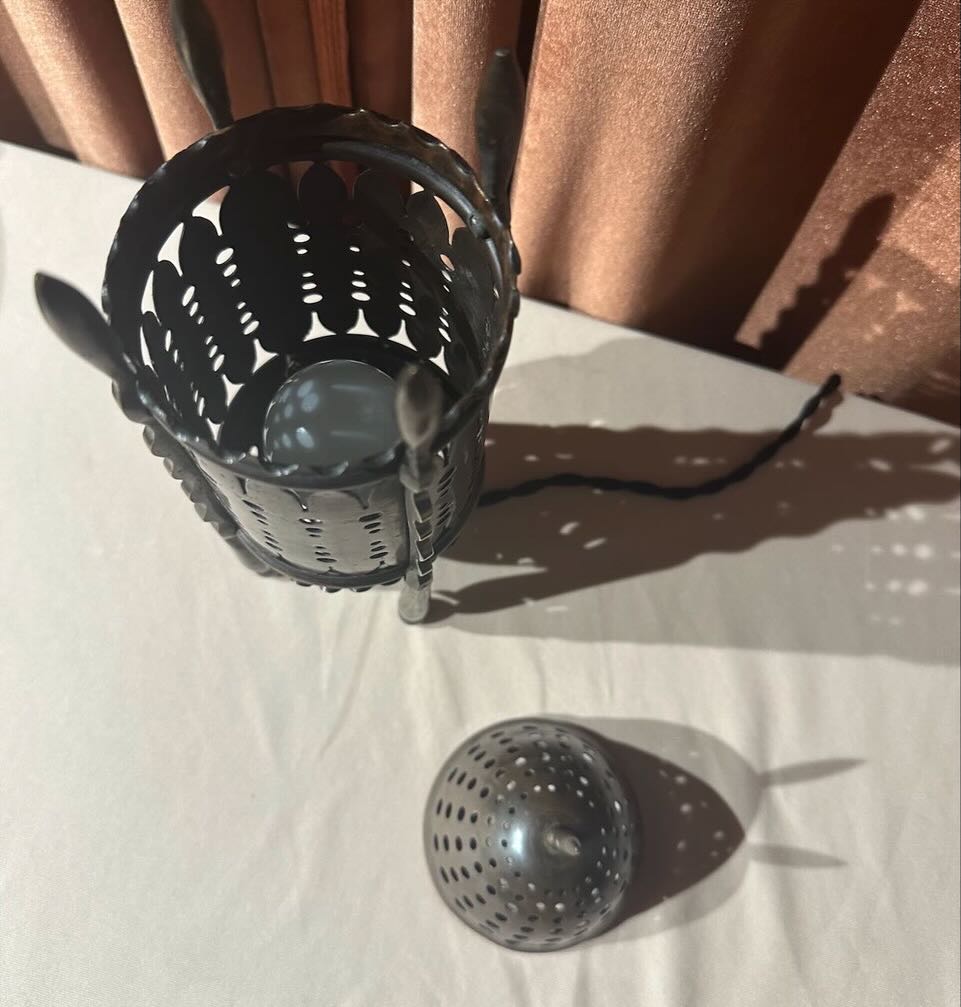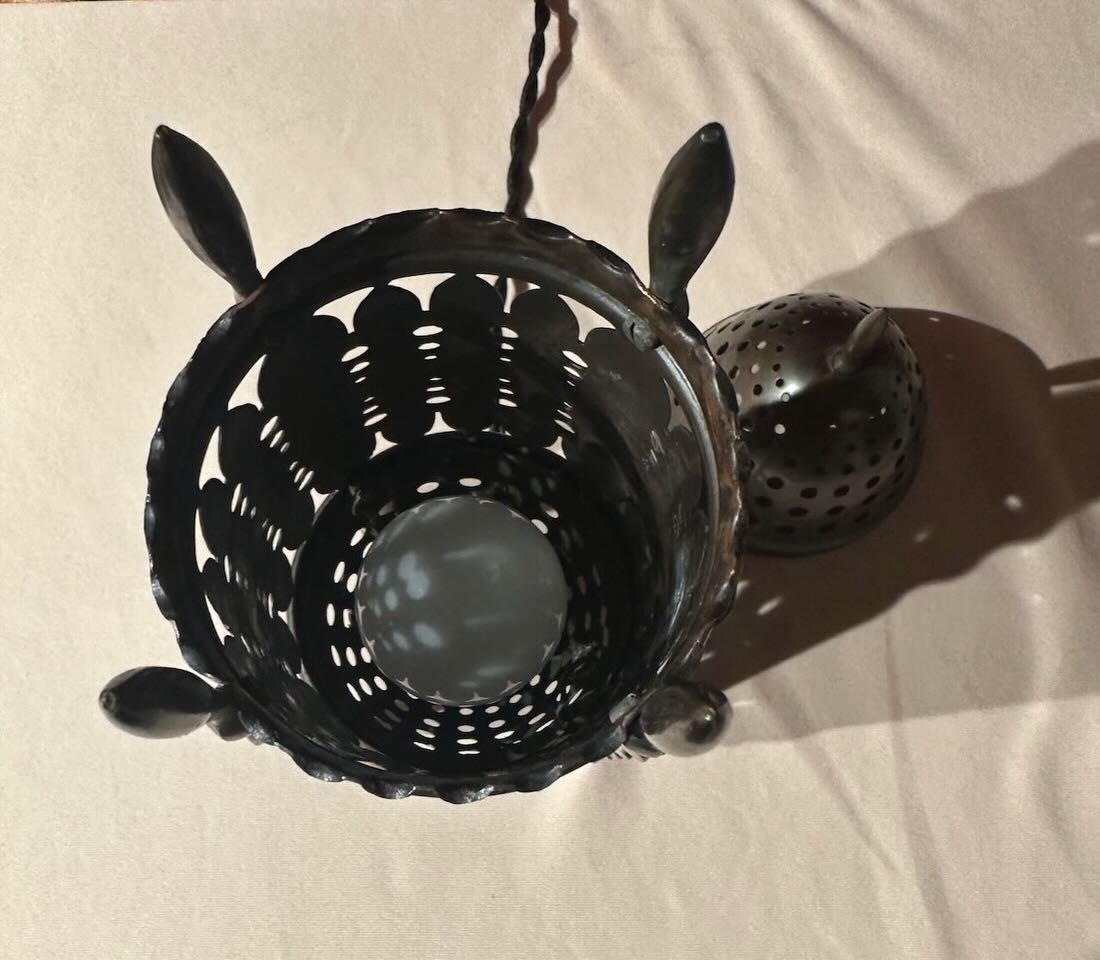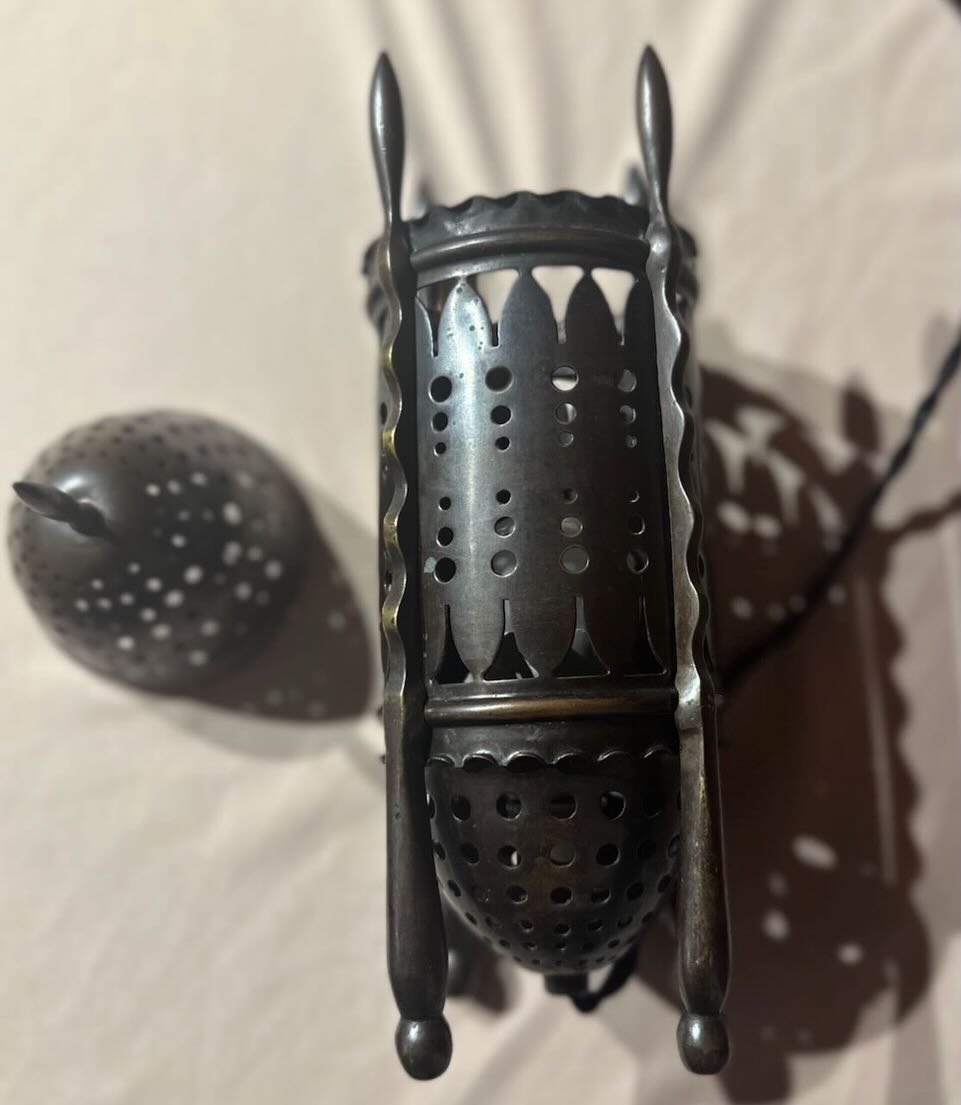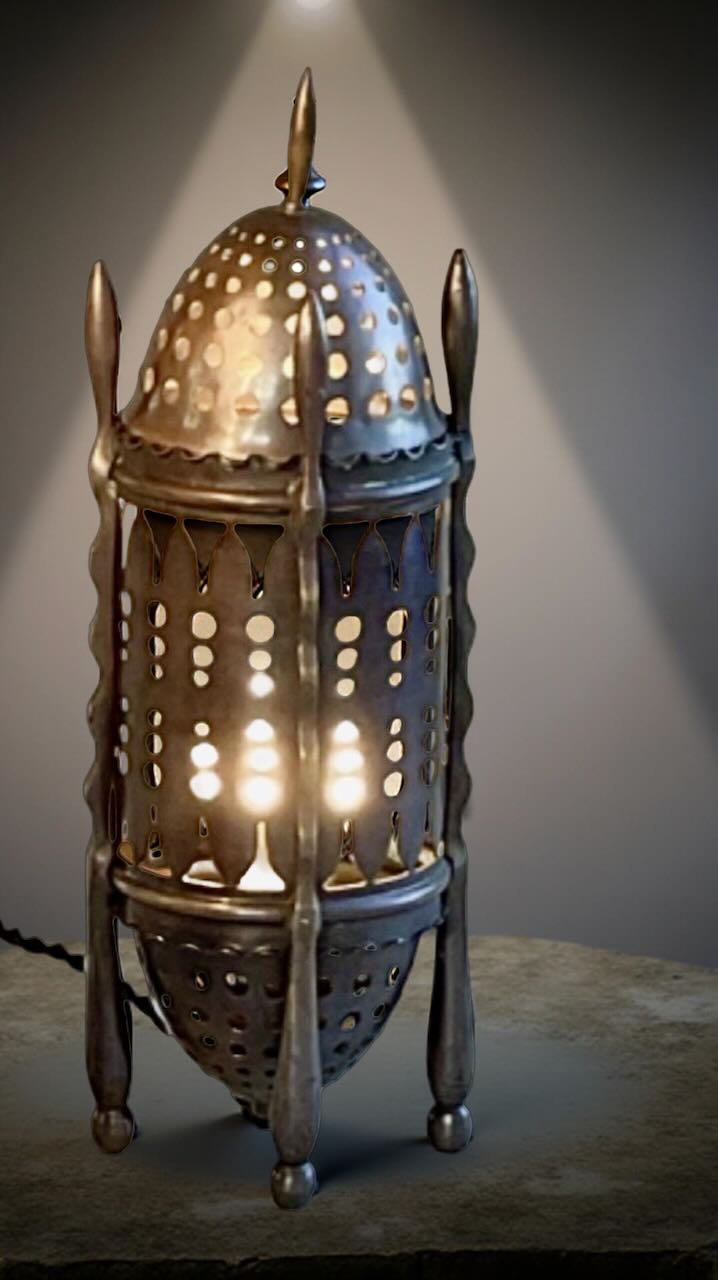Lighting
Amsterdam School of Design Metal Cut-Out Table Lamp, Winkelman & Van der Bijl, circa 1915
Amsterdam School of Design Metal Cut-Out Table Lamp, Winkelman & Van der Bijl, circa 1915
This rare Amsterdam School table lamp, attributed to H.J. Winkelman, dates to around 1915 and was produced in the noted decorative metal workshop of Winkelman & Van der Bijl. The lamp is crafted in dark patinated metal with a domed perforated top, spire finials, and a body formed with geometric cut-outs that cast striking patterned shadows when lit. Elevated on four sculpted legs with ball feet, its form feels both architectural and organic, embodying the expressive, sculptural qualities of Amsterdam School design. The careful rhythm of its cut metalwork demonstrates the workshop’s mastery in turning utilitarian lighting into a bold decorative statement.
Hendrik Jan Winkelman (1872–1948) was a Dutch painter, sculptor, metalworker, and furniture designer. In 1910, he co-founded Winkelman & Van der Bijl, a workshop that became closely associated with the leading architects of the Amsterdam School movement. Among their commissions was the celebrated Scheepvaarthuis (1913–1916) by Jo van der Mey, the first true Amsterdam School building.
This lamp exemplifies the group’s approach: merging craftsmanship, symbolism, and modern design into objects that carried the same dramatic presence as the architecture they were created to accompany. Today, surviving examples are scarce, making this an important and highly collectible piece of Dutch modernist lighting.
Amsterdam School lighting shares affinities with other avant-garde movements of the early 20th century, such as the Vienna Secession and the German Werkbund, where functional objects were treated as works of art. Like Josef Hoffmann’s pierced metal lamps or Richard Riemerschmid’s lighting for the Werkbund, this piece carries the sense of a handcrafted object designed to harmonize with architectural interiors. Yet, unlike its Austrian and German counterparts, Amsterdam School design often emphasized bolder, almost mystical ornament and a sense of monumentality, even in small-scale objects like this table lamp. For the collector, this lamp represents not only a piece of decorative lighting but also a piece of Dutch cultural history—an artifact that captures the ambition of architects and designers to elevate design into a total work of art.
